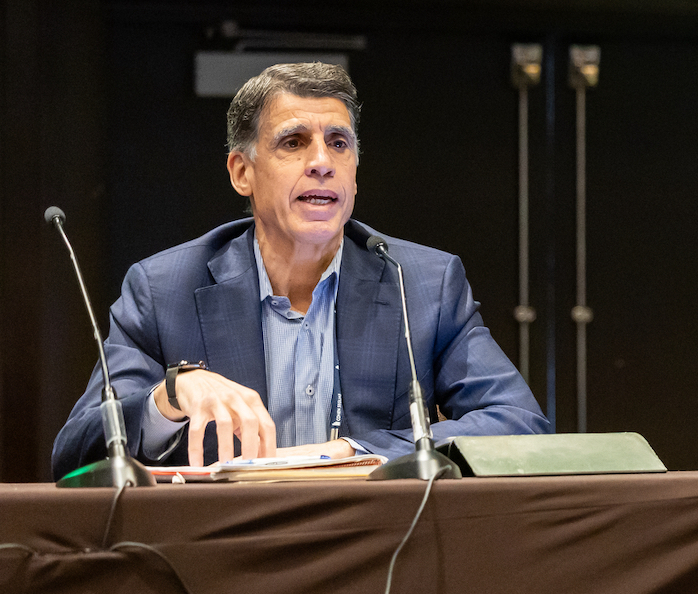LAS VEGAS – When CSC convened late last year in Las Vegas, tariffs and AI were hot topics (still are). Third Thursday covered tariffs last month (see article HERE) and this time we’re sampling the latest thoughts on artificial intelligence.
During a presentation (A Hard Look at the Use of AI in Construction) at CSC, panelists reminded attendees about a handful of recent cases where law firms used ChatGPT. In some cases, the groundbreaking AI program gave incorrect and even made up cases—and these cases are part of a larger AI problem called hallucinations.
 “Particularly if you’re using open source like ChatGPT, you can ask a generative AI to give you a memo or information—you can even ask it to create a brief,” confirmed panelist Richard R. Volack (pictured right), partner and chair, Cyber Security, Peckar & Abramson, P.C., New York. “And this is where attorneys have gotten into trouble…When getting information from ChatGPT, look for the sources that it used to create that product and verify them. If you’re having it write a brief, make sure that the cases are real…and make sure that they’re actually was a decided case and not just an amalgamation of different cases.”
“Particularly if you’re using open source like ChatGPT, you can ask a generative AI to give you a memo or information—you can even ask it to create a brief,” confirmed panelist Richard R. Volack (pictured right), partner and chair, Cyber Security, Peckar & Abramson, P.C., New York. “And this is where attorneys have gotten into trouble…When getting information from ChatGPT, look for the sources that it used to create that product and verify them. If you’re having it write a brief, make sure that the cases are real…and make sure that they’re actually was a decided case and not just an amalgamation of different cases.”
Thomas Z. Scarangello (below right), managing principal at New York-based Thornton Tomasetti addressed several aspects of AI, including the push and pull between time and outcomes. “In the construction management world, we’re going to go from a time-based world where everything was judged on how many hours it took, to an outcome-based world,” he said. “If we can start to use tools for jobs that used to take nine months and do it in nine minutes, how do you value that?
 “That’s going to be the big transformation, and it’s exciting,” Scarangello continued. “However, it’s going to be daunting as well because rules need to be made. One of the pushes in the industry lately has been collaboration between owners and contractors.”
“That’s going to be the big transformation, and it’s exciting,” Scarangello continued. “However, it’s going to be daunting as well because rules need to be made. One of the pushes in the industry lately has been collaboration between owners and contractors.”
AI and AI-aided technology is relatively young in the established worlds of engineering and law, and applications can be unexpected. Scarangello provided an example that involved the iconic Empire State Building. The entertainment industry was doing a promotion for the TV show House of Dragon and they wanted to “wrap a dragon” around the top of the Empire State Building.
“We had captured everything about that building, including the antennas and the mass at the top,” Scarangello remembered. “They were able to design a whole support system for that [the dragon] virtually. You could zoom in and find the bolts, the steel, and everything else. They knew exactly where they could attach to, and it would have been so much more work to have somebody up there, climbing the building to figure out where they could do it all, but they had all that data.
“That’s not why we scanned it,” Scarangello added. “We scanned it for the brick and for the windows, but they ended up with that additional data as well. We’re just starting to see where you start to get this data and think you’re going to use it for one thing and you find out there’s two or three other potential benefits that you did not anticipate.”

